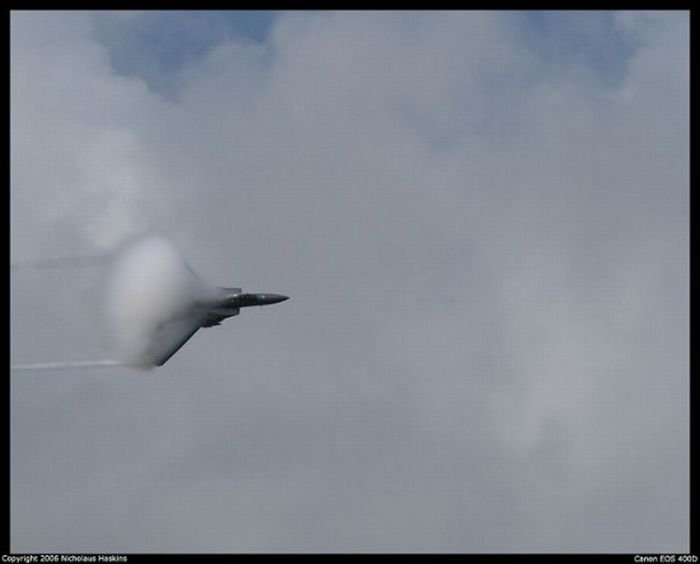|
|
Breaking The Sound Barrier
|
The tip the propeller on many early aircraft may reach supersonic speeds, producing a noticeable buzz that differentiates such aircraft. This is particularly noticeable on the Stearman, and noticeable on the T-6 Texan when it enters a sharp-breaking turn. This is undesirable, as the transonic air movement creates disruptive shock waves and turbulence. It is due to these effects that propellers are known to suffer from dramatically decreased performance as they approach the speed sound. It is easy to demonstrate that the power needed to improve performance is so great that the weight the required engine grows faster than the power output the propeller. This problem was one the issues that led to early research into jet engines, notably by Frank Whittle in England and Hans von Ohain in Germany, who were led to their research specifically in order to avoid these problems in high-speed flight.
Propeller aircraft were, nevertheless, able to approach the speed sound in a dive. This led to numerous crashes for a variety reasons. These included the rapidly increasing forces on the various control surfaces, which led to the aircraft becoming difficult to control to the point where many suffered from powered flight into terrain when the pilot was unable to overcome the force on the control stick. The Mitsubishi Zero was infamous for this problem, and several attempts to fix it only made the problem worse. In the case the Supermarine Spitfire, the wings suffered from low torsional stiffness, and when ailerons were moved the wing tended to flex such that they counteracted the control input, leading to a condition known as control reversal. This was solved in later models with changes to the wing. The P-38 Lightning suffered from a particularly dangerous interaction the airflow between the wings and tail surfaces in the dive that made it difficult to "pull out", a problem that was later solved with the addition a "dive flap" that upset the airflow under these circumstances. Flutter due to the formation shock waves on curved surfaces was another major problem, which led most famously to the breakup de Havilland Swallow and death its pilot, Gefrey de Havilland, Jr.
All these effects, although unrelated in most ways, led to the concept a "barrier" that makes it difficult for an aircraft to break the speed sound.
|
|









